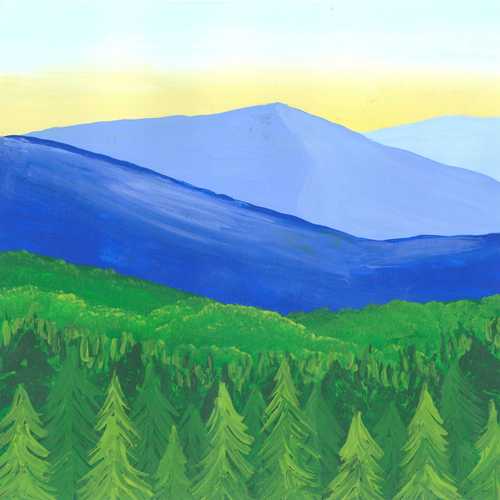
A Very Long Chat

I have a tradition of recording for the week around Summer Solstice every year. The long days and extended twilights draw out the liveliest and most expressive Dawn Choruses of the season. This year I’m in Sinlahekin Valley in Washington State’s Okanogan High Country. It’s a deep, long scar on the ground gouged and left behind by retreating arms of the Cordilleran Ice Sheets of the last several glaciated ice ages. Arid steppes on one side, fir-covered mountains on the other, the Valley draws a line that separates two of the major ecological regions in our State. Running much of the length of the Valley is Sinlahekin Creek, a meandering, beaver-controlled system that sustains a narrow strip of wetlands and riparian borders favored by passing migratory birds. Deep enough to not sustain strong wind, the Valley is a valuable shelter, sometimes for passing birds to rest, sometimes to stay.
One of those birds is the Yellow-breasted Chat, a laconic-yet-vociferous songbird with a voice both louder and deeper than belies its small size. One of the more enigmatic songbirds of North America, the Yellow-breasted Chat is widespread across the continent but rarely found in dense numbers. It skulks about in dense riparian thickets and other shrubby habitats, nesting deep within and singing from a barely-exposed perch. More often heard than seen in late Spring and early Summer, when males produce long soliloquies in search for a mate (or sometimes two), they have a brief but explosively creative burst of song every year, only to remain silent for the rest of it.
Recorded on Summer Solstice, 2024, this particular singer was a surprise. I had been hiking around one of my favorite valley campgrounds, enjoying the recent explosion of late-Spring songbirds, when I noticed a thicket that was particularly favored by local Lazuli Buntings. Nice Bunting recordings being a goal of this trip, I quickly set up a lightweight hiking recorder with a pair of small mics to leave overnight in hopes that Buntings could have time to sing as they saw fit.
Imagine my surprise when listening back to the recordings and found more than an hours’ worth of a Yellow-breasted Chat singing close by, as if I’d set these microphones up just for him!
Our Chat wakes up early in Nautical Twilight with a burst of whistles to rattle the neighborhood. After a brief rest, he begins his soliloquy of repeated grunts, rattles, beeps, and whistles. Soon, less than a minute later, the first distant songs of the next Chat over can be heard in the background. They space themselves out along the riparian border of Sinlahekin Creek just close enough to still be heard, far enough away to give each other space. While most birds sleep in and wait for more light, including Robins and Blackbirds, Nautical Twilight is their moment to sing.
For most of the next two hours this little bird will sing from the same perch, only occasionally shifting directions as if he wants to be sure everyone has an equal chance to hear his voice. His voice grows louder and softer as he turns toward or away from the microphones. He’s so close the early reflections off the leaves of the thicket scatter his voice back to us loud and clear even when he faces away. With almost mechanical precision he continues his steady chanting song.
As other birds awaken with the slowly breaking mountain dawn, the air fills with songs loud and soft behind — but never interfering with — the Chat. Soon there are cawing Crows, Black-capped Chickadees sweetly calling, “Phoee-be”, and Lazuli Buntings working out their unique and recently “crystalized” songs. A Veery sounds like a mournful flute the next hedge over. A Ruffed Grouse beats its wings with an almost too-low-to-hear “flah-thump”. Yellow Warblers, Red-eyed Vireos, Common Yellowthroats, and Spotted Towhees circle the neighborhood, calling from one tree, singing from another, never satisfied, at least not until Sunrise when everyone will disperse to live out their day foraging for meals and nesting material. Filling out the soundscape are Cedar Waxwings, Olive-sided Flycatchers, Pied-billed Grebes, Pine Siskins, rowdy gangs of teenaged Red-winged Blackbirds, and more.
After Sunrise the avian community slowly disperses. The Dawn Chorus is no more, replaced in whole by daily activities. Song continues as part of that organizing behavior, but the Dawn pronouncements are over after nearly 2 hours of upwelling joy. Our chat slowly moves farther and farther from his perch, allowing daring Buntings and Towhees the chance to take over the job of songmeister. If we were to keep listening throughout the day, we’d hear the Yellow Chat come and go, ensuring his perch and his home remain his and his alone. At night he will reverse the process, singing from Sunset to Astronomical Twilight, no so much fading away but just stopping when it’s time to fall asleep, to gain back some of that spent energy to do it all again tomorrow.
Recorded by Andy Martin in Okanogan High Country, USA
Earth.fm is a completely free streaming service of 1000+ nature sounds from around the world, offering natural soundscapes and guided meditations for people who wish to listen to nature, relax, and become more connected. Launched in 2022, Earth.fm is a non-profit and a 1% for the Planet Environmental Partner.
Check out our recordings of nature ambience from sound recordists and artists spanning the globe, our thematic playlists of immersive soundscapes and our Wind Is the Original Radio podcast.
You can join the Earth.fm family by signing up for our newsletter of weekly inspiration for your precious ears, or become a member to enjoy the extra Earth.fm features and goodies and support us on our mission.
Subscription fees contribute to growing our library of authentic nature sounds, research into topics like noise pollution and the connection between nature and mental wellbeing, as well as funding grants that support emerging nature sound recordists from underprivileged communities.
